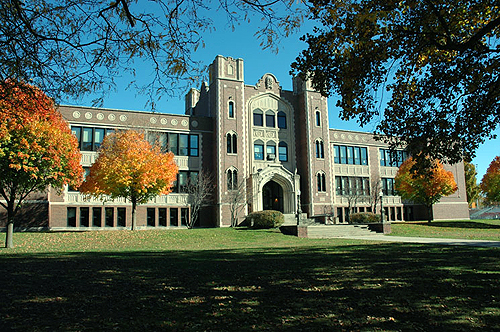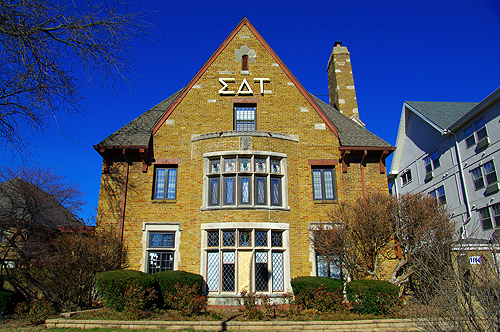Jacobean (1890-1940)
 |  |
Based on a variety of late Medieval English prototypes, and freely mixed with other American Eclectic expressions, Jacobean buildings were united by a dominance of steeply pitched, front-facing gables, frequently ornamented with false-half timbering with stucco or decorative brick infilling. Initial American examples from the early 19th century closely mimicked medieval buildings with renaissance detailing from the reign of Elizabeth I (1558-1603) and James I (1603-25), the Elizabethan and Jacobean eras of English history.
| |
Jacobean architecture was infrequently used in America because of its high cost of construction. Only the very affluent could afford it, with outstanding examples surviving in the Maryland-Virginia area. Between 1900 and 1920, less pretentious Tudor houses were superimposed with steep gables, half-timbering and other typical detailing. These more modest examples had walls clad with weatherboard, shingles or stucco, avoiding the expense of masonry construction. The style became very popular during the 1920s and ‘30s as masonry veneering techniques were developed. Fading from fashion in the 1930s, the Jacobean style saw a revival through a slightly modified Neoeclectic movement in the 1970s and ‘80s.
| |
Identifying features of the Jacobean style include steep pitched roofs, usually side-gabled (less commonly hipped or front gabled), a façade dominated by cross gables, tall, narrow windows usually in multiple groups with multi-pane glazing, and massive chimneys, commonly crowned with decorative chimney pots. | |
